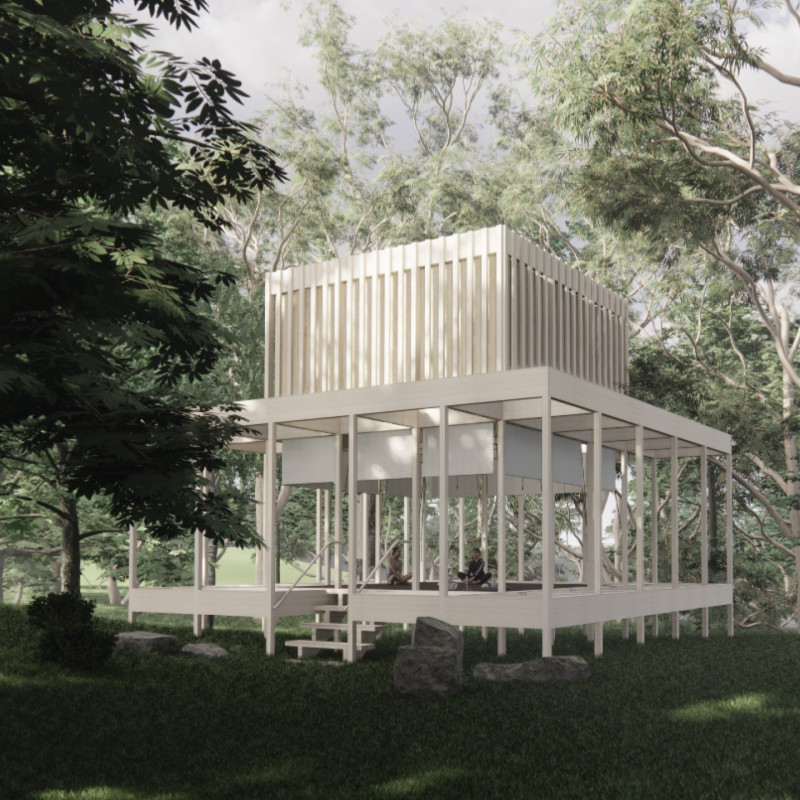5 key facts about this project
The meditation cabin situated in the Earth Energies Sanctuary in New Zealand emphasizes tranquility and introspection. Located in a quiet forest clearing, the cabin is designed to be far removed from city sounds and sights, enhancing its role as a space for reflective practice. The concept focuses on meditation principles that create an environment conducive to looking inward and reducing external distractions.
Environmental Integration
The cabin opens to the temperate climate of New Zealand's North Island, allowing for natural airflow and light from the surrounding forest. This design choice encourages a strong connection between the inside and the outside, fostering a sense of peace with the natural setting. Users can adjust the space to suit different weather conditions, offering comfort for various meditation practices.
Dual Purpose
In addition to its primary function as a meditation space, the cabin incorporates areas for drying plants and producing natural products. This dual use allows visitors to actively engage with the local ecosystem. The design combines meditation and education, providing a chance for guests to learn about local flora while enjoying a reflective experience.
Symbolic Design
Raised on a plinth, the cabin represents the journey from daily concerns to a state of higher awareness through meditation. This elevation also reduces the environmental impact of the structure, using pier foundations that sustain natural resources below. The plinth serves another function by supporting drying trays, where visitors can see plants being prepared for use, enriching their understanding of both the space and its purpose.
Material Choices
The structure features a framework made from local New Zealand timber, highlighting the importance of sustainability and regional materials. This selection not only supports the local economy but also establishes a connection with the environment. The dimensions of the cabin accommodate the drying trays positioned around the plinth, allowing for practical and organized use of space.
The overall design reflects a careful balance of form and function, where light and shadow interact to create a calm atmosphere. This thoughtful environment invites users to explore their inner thoughts in peace and comfort.






















































